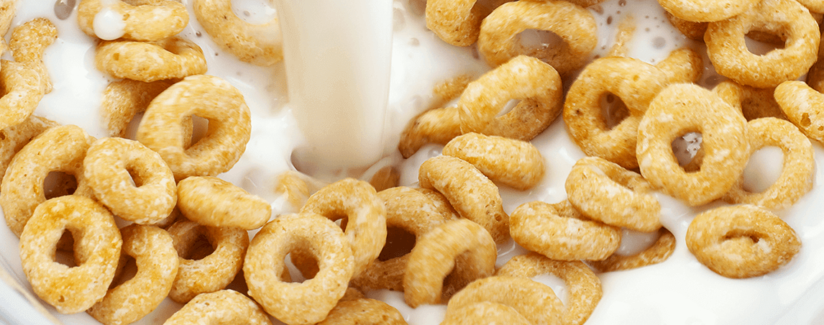
Concerned About Glyphosate?
Are you worried about glyphosate? This chemical has been a topic of interest lately. Parents are concerned because a study found traces of glyphosate in children’s cereal.
What is glyphosate? It is a herbicide also known by the trade name Roundup that is commonly used on farms and lawns to control weeds. At Best Food Facts, we’ve received questions from readers about it and have looked to experts for answers such as What’s All the Buzz about Glyphosate? Are We Being Poisoned by Glyphosate?
For insight into questions about glyphosate in cereal and chemicals in food, we asked Canadian expert Robert Wager, biochemistry and molecular biology faculty at Vancouver Island University, to provide information about this topic.
Should I be concerned about glyphosate in my cereal?
Wager: “No major international regulatory body considers glyphosate a health risk. The International Agency for Research on Cancer considers a risk to measure the probability that a health problem could occur, taking into account the level of exposure. Science is getting better at detecting smaller quantities, such as one part per billion which is equivalent to one second in 32 years. The fact we can detect glyphosate at parts per billion has zero significance to health. For example, it would not be possible for a person to eat enough bread, drink enough beer or eat enough oatmeal in a day to come close to the acceptable daily intake of glyphosate. The Canadian food system utilizes modern agriculture techniques to provide safe, affordable and an abundant food supply to Canadians and other countries around the world.”
In the United States, the Environmental Protection Agency sets safety standards for chemicals used on farms.
Why do farmers use glyphosate?
Wager: “Farmers use glyphosate to control weeds in a sustainable way. In years past farmers relied on tillage to control weeds but this led to extensive soil loss by wind and water erosion. No-till agriculture using herbicides to control weeds helps improve the organic content of the soil as well as help preserve the soil for future generations. Glyphosate is low toxicity and degrades completely into non-toxic compounds. This is not the case for some of the older herbicide that glyphosate replaced. Because glyphosate is more effective than most other herbicides it allows the farmer to use less in the production cycle.”
Is it possible to deliver food that is guaranteed “chemical-free”?
Wager: “’Chemical-free’ is a marketing term. It has nothing to do with food production. Everything is made of chemicals. You and I are walking, talking bags of bio-chemical reactions. If one assumes ‘chemical-free’ means without pesticides it is still impossible. Plants are unable to escape from animals and insects that eat them. Plants have developed thousands of toxic compounds to ward off animals and insect attacks.
“The famous Dr. Bruce Ames’ paper showed that 99.99% of all the toxins (pesticides are one type of toxin) we consume are from natural sources. If a plant is attacked more because no pesticides are applied to it by the farmer, the plant will increase the amount of toxins it produces. The vast majority of these natural toxins have not been analyzed for safety. This in contrast to the extensive safety testing each and every synthetic pesticide must go through before it can be used on Canadian crops. Health authorities around the world agree that glyphosate, when used as directed, is a safe effective herbicide.
Glyphosate Facts
- Glyphosate was subject to rigorous scientific review when it was first registered and has been re-evaluated multiple times since then. Health Canada notes “Health and environmental risks are considered acceptable if there is reasonable certainty that no harm to human health, future generations or the environment will result from exposure to or use of the pesticide, based on its conditions or proposed conditions of registration”.
- The presence trace amounts of herbicides in food, like glyphosate that have passed rigorous scientific view, is not significant enough to pose a risk to the public. The maximum residue levels set by Health Canada are assessed using modern scientific methodology and are consistent with those of other major Organization for Economic Co-operation and Development (OECD) countries.
Glyphosate is used to control weeds and it has been extensively tested for safety. Glyphosate has been detected in very small amounts in foods. Those trace amounts are below the amount determined to be safe by regulatory bodies and do not pose a health risk.
For more information:
Glyphosate in Food
Does Glyphosate Cause Cancer?
How Much Pesticides Are Used on Crops?
FAQ About Glyphosate
Are Farmers Using More Pesticides?


























